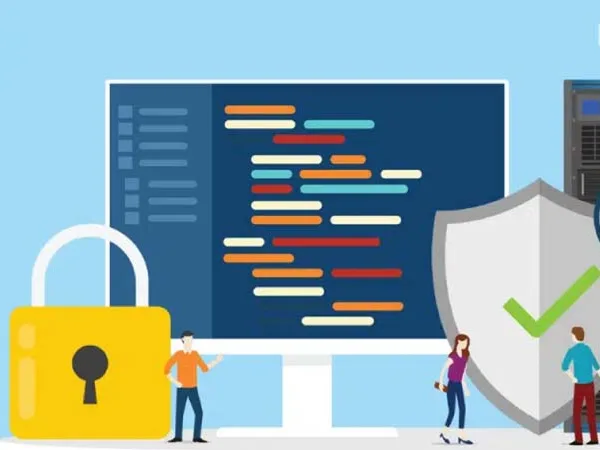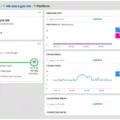In today’s digital age, organizations are increasingly turning to Zero Trust security solutions to help protect their networks from malicious actors. Zero Trust is a security framework designed to ensure that all users, whether inside or outside the organization’s network, are authenticated, authorized, and continuously validated for proper security configuration and posture before they can access applications and data.
At its core, Zero Trust is about maintaining a “trust but verify” approach to every user and device attempting to access the network. It requires organizations to employ rigorous authentication measures – including multi-factor authentication and user behavior analytics – in order to verify that users have been properly identified. Once verified, users must be continually monitored for suspicious activity in order to maintain access privileges.
Zero Trust provides organizations with robust protection from cyber threats by utilizing several different pillars: Identity, Device, Network, Application Workload, and Data. Let’s take a closer look at each of these pillars:
Identity: In order for any user or device attempting to access an organization’s network to be granted privileges, they must first be positively identified through multi-factor authentication methods such as password verification codes sent via SMS or email. Additionally, user behavior analytics can help identify anomalies in user activity that could indicate suspicious behavior.
Device: All devices that attempt to connect with an organization’s network must be validated against pre-defined policies in order for access privileges to be granted. This ensures that only trusted devices can gain access while preventing malicious actors from exploiting vulnerable devices on the network.
Network: Organizations should deploy multi-layered security measures such as firewalls and intrusion prevention systems (IPS) in order to protect their networks from malicious traffic emanating from outside sources. Additionally, segmentation of the network should also be employed in order to limit the scope of potential breaches.
Application Workload: Organizations should also employ application whitelisting solutions in order to guarantee that only approved applications are running on their networks. This helps prevent unauthorized applications from accessing sensitive data or executing malicious code on their systems.
Data: Data encryption should also be employed in order for any sensitive data stored on an organization’s systems to remain secure. Additionally, data loss prevention solutions should also be deployed in order for organizations to monitor where their sensitive data is being accessed and how it is being used by authorized personnel.
For organizations looking for a comprehensive zero trust solution, there are many vendors available who offer products tailored towards this type of security framework – such as Akamai, Cisco Cloudflare Illumio Palo Alto Networks Symantec Okta Forcepoint, etc. These vendors provide a wide range of tools that can help organizations implement a successful zero-trust strategy across all five pillars outlined above – helping them keep their networks safe and secure at all times.

Understanding the Benefits of a Zero Trust Program
A Zero Trust program is a security framework designed to help organizations protect their data, applications, and users from cyber threats. It requires all users, both inside and outside of the organization’s network, to be authenticated, authorized, and continuously validated for security configuration and posture before being granted or keeping access to applications and data. In this way, a Zero Trust program helps ensure that only those with the appropriate credentials can access sensitive information or systems.
The primary goal of a Zero Trust program is to reduce the attack surface by eliminating trust in any single user or device. This is achieved by requiring each user to authenticate themselves every time they attempt to access an application or system. Additionally, multi-factor authentication (MFA) may be employed as an additional layer of security. By using MFA, the user must provide two or more pieces of evidence before being granted access.
Zero Trust also employs continuous monitoring of user activity throughout their session as an additional security measure. Through this monitoring process, any suspicious activity can be identified and blocked before it compromises the system. This helps ensure that only authorized users have access to resources at all times.
Overall, a Zero Trust program provides an additional layer of protection against cyber threats while helping organizations maintain compliance with industry regulations.
The Benefits of Implementing a Zero Trust Model
Zero trust is a security model that does not automatically trust any user or device that attempts to access an organization’s resources. Instead, it requires users and devices to be authenticated and authorized before they are allowed to access resources. For example, if a user attempts to connect to the corporate network from an unfamiliar device, the zero trust model would require that user provide additional authentication and authorization details (such as a one-time code sent via text message) before they are granted access. By using this method of authentication, organizations can ensure that only authorized personnel are accessing their networks and systems. This helps protect against malicious actors who may attempt to gain unauthorized access.
The Seven Pillars of Zero Trust
The 7 pillars of Zero Trust are the core components that make up a successful Zero Trust security framework and provide the foundational elements to secure an organization’s network and data. These pillars include User, Device, Network, Infrastructure, Application, Data, Visibility and Analytics, and Orchestration and Automation.
1. User: This pillar focuses on ensuring user authentication and authorization processes are in place to identify a user’s identity before granting access to resources or applications. This includes methods such as multi-factor authentication (MFA), Single Sign On (SSO) solutions, biometrics, or other identity management solutions.
2. Device: This pillar is responsible for verifying the device that is attempting to access the network or system is secure and trusted. This is usually accomplished through device policies such as endpoint security software that ensures devices are configured properly and have their latest patches applied regularly.
3. Network: The Network pillar focuses on protecting the network itself from threats by segmenting areas of the network with firewalls and micro segmentation tools while also monitoring traffic flows for any suspicious behavior or malicious activity being attempted from outside sources.
4. Infrastructure: The Infrastructure pillar is responsible for ensuring all IT infrastructure such as servers and storage systems are secure against threats by implementing security best practices such as patching regularly, encrypting data at rest or in transit, maintaining a secure configuration baseline etc.
5. Application: The Application pillar focuses on protecting applications from malicious activity by utilizing application whitelisting capabilities or other application security measures such as web application firewalls (WAFs).
6. Data: The Data pillar deals with protecting sensitive data both at rest (stored in databases) or in transit (moving between systems). This can be accomplished through techniques like encryption, tokenization, or masking of important data fields while also enforcing least privilege access controls so users only have access to the data they need to do their job effectively without compromising the security posture of the organization.
7. Visibility & Analytics: This pillar is often overlooked but plays an important role in a successful zero-trust strategy by providing visibility into what users are doing on the network so any suspicious activity can be identified quickly before it escalates into a breach situation. Additionally, analytics can be used to monitor user behavior across different systems to detect anomalies that may indicate malicious intent or insider threat situations which can then be acted upon quickly before further damage occurs.
8. Orchestration & Automation: Lastly this pillar focuses on automating security processes where possible using automation tools such as scripting languages or orchestration platforms like Kubernetes which ensure repeatable processes are followed each time an action needs to be taken against a threat actor which eliminates human error from the equation altogether resulting in improved response times when needed most.

Source: hexagon.com
Disadvantages of Zero Trust
The main disadvantage of zero trust is that it can be difficult to maintain user productivity and efficiency. With zero trust, users must go through multiple layers of authentication before gaining access to sensitive data, applications, or resources. This can be time-consuming and may impact user experience. Additionally, zero trust requires a high level of vigilance and management to ensure access is given to the right people at the right time. If not managed properly, users may find themselves locked out of files or applications due to misconfigurations or other errors. Finally, zero trust requires an investment in security infrastructure and staff in order to properly implement and manage it.
The Three Stages of the Zero Trust Security Model
The three stages of the zero trust security model are:
1. Assess: Establish an identity and access management framework that authenticates, authorizes, and verifies user requests for access to corporate resources. This includes the use of strong authentication methods such as multi-factor authentication (MFA).
2. Control: Implement segmentation controls that restrict access to specific applications and data based on user roles, locations, and usage patterns. This includes the use of network micro-segmentation to isolate traffic between different applications and devices.
3. Recover: Create a robust incident response plan that outlines steps to be taken in the event of a security breach or other malicious activity. This plan should include timely notification of stakeholders, system containment measures, forensics analysis, and patching/remediation to prevent future incidents.
The Goal of Zero Trust Security
The real goal of Zero Trust is to create a secure system where access to data and services is controlled on an individual basis. This means that instead of granting blanket access to all users, access is restricted based on the user’s specific identity and their current level of trust. This approach minimizes the risk of unauthorized access by preventing users from accessing resources they are not authorized for. Furthermore, it prevents attackers from exploiting vulnerable resources or systems in order to gain access to sensitive data. The goal of Zero Trust is ultimate to protect an organization’s systems, data, and services while allowing legitimate users to access the resources they need in a safe and secure manner.

Source: investopedia.com
The Benefits of Zero Trust Over VPNs
Zero trust networks (ZTNAs) are a more secure and efficient way to connect users to applications than virtual private networks (VPNs). ZTNAs provide an extra layer of security by authenticating a user’s identity before allowing access to data or applications. This authentication process helps protect against security threats, malicious actors, and unauthorized access.
Additionally, ZTNAs provide better performance than VPNs because they do not route traffic through multiple servers before reaching the corporate data center. By connecting users directly to the application, ZTNAs reduce latency and improve the user experience. Furthermore, many ZTNA solutions support adaptive access policies that allow organizations to fine-tune their security posture based on the user’s identity, device, location, and other factors. This can help ensure that only authorized users have access to sensitive data or applications.
Overall, zero-trust networks provide improved security and better performance than VPNs by authenticating users before granting access and eliminating the need for data to travel through multiple servers.
Implementing Zero Trust Security
Implementing zero trust requires a comprehensive approach to secure access and authentication. The first step is to segment the network, creating trusted boundaries around sensitive systems and data. This can be done through the use of virtual private networks (VPNs) or virtual local area networks (VLANs). Additionally, identity and access management should be enhanced through the use of multi-factor authentication (MFA) and role-based access control (RBAC).
The next step is to implement the least privilege at the firewall level. This involves establishing rules that restrict access based on user credentials, such as IP address or domain name. It also requires setting up granular controls for application traffic, such as port numbers or service names.
Application context must also be added to the firewall in order to ensure that requests from legitimate sources are properly authenticated before being allowed entry into a network. This could include verifying the user’s identity with MFA or RBAC. Additionally, it could involve monitoring application behavior to detect threats and malicious activities.
Finally, security events should be logged and analyzed in order to detect suspicious activity or policy violations. Regular audits should also be conducted in order to ensure that policies are being enforced correctly. By taking these steps, organizations can effectively implement a zero-trust architecture and improve their overall security posture.
The Relevance of Zero Trust in Today’s World
Yes, Zero Trust is still highly relevant. In today’s world of digital transformation, cloud computing, and remote work, traditional security models based on location no longer provide sufficient protection for businesses. Zero Trust offers a much more comprehensive and modern approach to security that takes into account identity and access. This approach focuses on verifying the identity of every user and device attempting to access an organization’s network or data, regardless of their location. Additionally, Zero Trust emphasizes continuous monitoring in order to detect any potentially malicious activity as soon as possible. By focusing on verifying identities and continuously monitoring activity, businesses can better protect themselves from potential threats posed by malicious actors.
Does Google Implement Zero Trust Security?
Yes, Google does use zero-trust security. Zero-trust is a security model where all users and applications must be authenticated and authorized for access to resources on the network, regardless of their geographic location or device type. This means that no user or application can be trusted to have safe access until they have been verified and authorized. Google Cloud implements Zero Trust with its BeyondCorp Enterprise product, which provides a secure access platform for businesses that ensures only the right users and devices are granted access to corporate networks and applications. With BeyondCorp Enterprise, organizations can define granular access policies that apply across all their services and keep them secure without having to manage individual user accounts or devices.
Conclusion
In conclusion, zero-trust software is a valuable tool for organizations looking to increase their security posture. It allows users, whether in or outside the organization’s network, to be authenticated, authorized, and continuously validated for security configuration and posture before being granted or keeping access to applications and data. With the help of a Zero Trust vendor, organizations can protect themselves from a variety of threats by implementing secure third-party access, multi-cloud remote access, IoT security, and visibility. There are many vendors who offer Zero Trust solutions such as Akamai, Cisco, Cloudflare, Illumio, Palo Alto Networks Symantec, Okta, and Forcepoint. Organizations should do their research on the different vendors and select the one that best fits their needs.








